In 2010 I began working on my new book, The End: 50 Apocalyptic Visions From Pop Culture That You Should Know About... Before It's Too Late. It's a comprehensive collection of the 50 best apocalyptic movies, books, songs, and artworks out there -- perfect for doomsday buffs of all ages.
Anyway, before I started my research -- in which I threw myself into learning more than I could ever possibly want to know about the countless ways the world could implode -- I wasn't a die-hard sci-fi nerd or apoca-lit fanatic. But the subject intrigued me; I loved The Road and 28 Days Later as much as the next girl, so I sought out the coolest, scariest, and most unique works to include in The End. Said research required countless excruciating hours of movie-watching, reading about vampire plagues, re-animated zombies, and civilizations beginning anew after nuclear annihilation. (Hard work, I know.)
But during my research, I noticed something. There was a clear gender gap in the world of apocalyptic pop-culture works -- i.e. women didn't seem to be publishing nearly as many apocalyptic books or directing nearly as many apocalyptic movies as their male counterparts.
Could women really be less interested in the seemingly universal (and universally terrifying) theme of the world's end? Doubtful. Women see tons of sci-fi and action movies. They devour heaps of comics. They read sci-fi books, too (though the New York Times asserts that sci-fi is the favorite genre of only 25 percent of female readers, versus 40 percent of male readers). Long story short: Ladies eat this stuff up, probably just as much as men do.
So why aren't there more women-penned apocalyptic cultural offerings out there? Um, probably for the same reason there aren't more books, films, etc. (of any genre) by women out there: because works by women are less likely to get picked up by distributors, less likely to get funding, and less likely to get published. It sucks, but it's just another reminder that we still live in a sexist society that celebrates and rewards men's artistic pursuits while systemically neglecting the important contributions of women in the arts.
In the spirit of addressing that gender gap, I thought I'd share a few of my favorite apocalyptic works by women. Consider this a reminder that yes, this stuff exists, and women are reading it, watching it, and making it. But it's consumers' job to find it, support it, and spread the word!
Oryx and Crake(novel) by Margaret AtwoodOryx and Crake is a 2003 novel (part of the MaddAddam trilogy) by one of my favorite authors, Margaret Atwood. It focuses on a future world ravaged by a potent man-made virus. Civilization has fallen and the world has been utterly destroyed by social inequity, large-scale genetic engineering, and greed. The main character, Jimmy, thinks he's the last person alive. Though the book is pretty out-there in its depictions of said future existence (live execution websites are popular, and there's a new, genetically-mutated human species called the Crakers), the heart of the story centers on the friendship between Jimmy and his childhood BFF, Crake, and the chaos that ensues when they fall for the same woman.
The Last Man(book) by Mary Wollstonecraft ShelleyMary Shelley's hulking, three-volume 1826 novel requires a major commitment even from voracious readers, but it's one of the earlier apoc works out there, and it's worth it. Set in an apocalyptic future between 2073 - 2100 A.D., Shelley's tale describes the terrible impact of a plague that kills off almost all of humanity. It's a complex book written in a scholarly but grandiose voice, chock full o' philosophical and religious themes, plus lots of references to gender (despite being the daughter of feminist theorist Mary Wollstonecraft, Shelley sometimes seems to depict women as weak and evil -- blargh).
Deep Impact (film) directed by Mimi LederIf you're like me, you saw this big-budget "a comet is coming" blockbuster when it first hit theaters in 1998. No, it's not the deepest or most profound tale ever told, but it did what summer hits are supposed to do: captivate and thrill audiences. It's one of the few apocalyptic films out there directed by a woman, and after its release, Deep Impact was the highest-grossing film directed by a female (it held that honor for a decade before Twilight grabbed the title in 2008). Deep Impact was a success at the box office, though it was eventually overshadowed by Armageddon, a similar disaster film that came out just a couple months later with much hype and fanfare.
"99 Luftballons" (song) by NenaOK, so this classic '80s single was, alas, written by guys. But it was performed -- perfectly -- by lead singer Nena Kerner, whose sweet vocals and unique delivery helped make the song a smash success. "99 Luftballons" is one of the most instantly recognizable hits of the 1980s, and the original German version of the tune reached #2 on America's Billboard Hot 100 chart. Though the music sounds boppy and fun, the Cold War-themed subject matter is anything but. Songwriter / Nena guitarist Carlo Karges wrote the song in 1982 after suddenly noticing that balloons were being released into the air in West Berlin. As he watched them drift away, his vision became strained and he thought they looked like UFOs. He wondered how East German or Soviet forces would respond if the balloons crossed the Berlin Wall over to the Russian side. At the end of the song, the narrator ends up alone, standing "pretty in this dust that was a city."